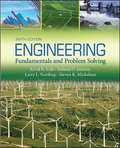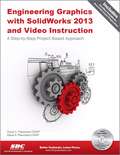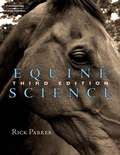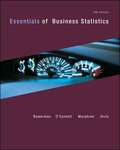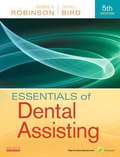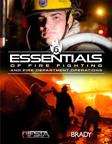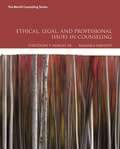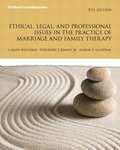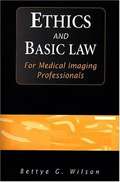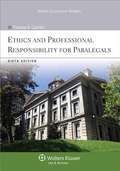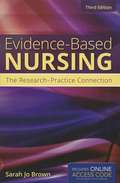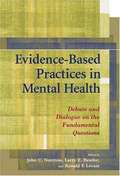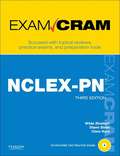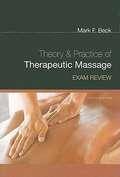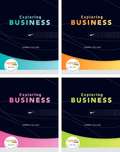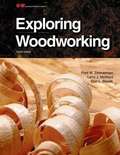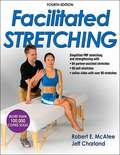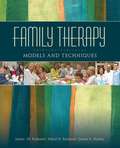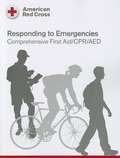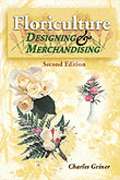- Table View
- List View
Engineering Fundamentals and Problem Solving
by Arvid R. Eide Roland Jenison Steven Mickelson Larry L. NorthupEngineering Fundamentals & Problem Solving is written to motivate engineering students during their first year. A complete introduction to the engineering field, this text will help students develop the skills to solving open-ended problems in SI and customary units while presenting solutions in a logical manner. Eide introduces students to subject areas that are common to engineering disciplines that require the application of fundamental engineering concepts. Engineering Fundamentals & Problem Solving remains the most comprehensive text for an introductory engineering course. The book provides students a realistic opportunity to learn to apply engineering principles to the solution of engineering problems, and the author's approach keeps students on task toward an engineering career by showing how the materials applies to the student's school, life, and career. While not every course will cover all the topics in this text, McGraw-Hill is proud to offer Create, which will allow you to select the material you need from this text and many others in our B. E. S. T. series for freshman engineering so you can creat materials exactly suited to your course. For more information, please go to the Create website or contact your sales representative.
Engineering Graphics with SolidWorks 2013
by David C. Planchard Marie P. PlanchardEngineering Graphics with SolidWorks 2013 is written to assist technical school, two year college, four year university instructor/student or industry professional that is a beginner or intermediate SolidWorks user. The book combines the fundamentals of engineering graphics and dimensioning practices with a step-by-step project based approach to learning SolidWorks. The book is divided into two parts: Engineering Graphics and SolidWorks 3D CAD software.
Equine Science (2nd edition)
by Rick ParkerThis text covers the reproduction, development, training, nutrition, health, and general management of horses, with chapters on breeds and classes of horses, functional anatomy, biomechanics of movement, genetics, and selecting and judging horses. Also covered are feeds, parasite control, behavior and training, and career opportunities. Learning features include objectives, key terms, and activities, plus appendices on gestation calculations and health maintenance scheduling, and contact information for horse industry organizations and agencies. This second edition provides Internet resources. Parker is a division director at the College of Southern Idaho.
Equine Science (3rd edition)
by Rick ParkerHorses hold a special place in North America's history and culture. As America evolved, horses contributed to the economy by providing power for transportation and industry. Today horses still contribute to the economy but in a much different way. According to a study commissioned by the American Horse Council Foundation, the 9.2 million horses in the United States contribute $39 billion annually in direct economic impact and support 1.4 million jobs on a full-time basis. When indirect spending is included, the horse industry's economic impact reaches $102 billion annually. The overall economic impact of horses comes from racing, recreation, sports, rodeos, farm work, pleasure riding, and competitions. While millions of people participate in the horse industry as spectators, almost 5 million Americans are involved in the industry as horse owners, service providers, employees, and volunteers. Horses are found in every state, and 45 states have at least 20,000 horses. The horse industry is vital and growing. With this vitality and growth comes the need for information about horses, so the numbers of horse-related educational programs, books, pamphlets, videos, and Internet sites are increasing rapidly.
Essential Pain Pharmacology: The Prescriber's Guide
by Marco Pappagallo Howard S. SmithEssential Pain Pharmacology: The Prescriber's Guide expertly reviews the most important medications used to relieve pain, now considered by many physicians as the fifth vital sign. The catalogue of analgesics has expanded rapidly, and this text presents the most up-to-date, comprehensive array of agents available for prescribing. Each clear and concise drug entry covers the range of indications, advantages and disadvantages, and tips for appropriate dosing and avoiding adverse effects. A separate section covers nutraceuticals, a class of drug increasingly used to manage chronic pain, yet little discussed in medical literature. The detailed description of each medication enables the user to make quick and informed decisions, confident that they are best serving the needs of their patients. Practical 'pearls' for each entry provide a quick go-to reference for the key information to consider before prescribing. This concise user-friendly reference is a must-have on the shelf of every physician.
Essentials Of Business Statistics
by Bruce L. Bowerman Richard O'Connell J. Burdeane OrrisThe new edition of Essentials of Business Statistics delivers clear and understandable explanations of core business statistics concepts, making it ideal for a one-term course in business statistics. The author team--Bowerman/O'Connell/Murphree/Orris-emphasize the importance of interpreting statistical results to make effective decisions to improve business processes. The text offers real applications of statistics that are relevant to today's business students which can be seen in the continuing case studies throughout the book. Continuing cases span throughout a chapter or even groups of chapters, easing students into new topic areas. Connect is the only integrated learning system that empowers students by continuously adapting to deliver precisely what they need, when they need it, and how they need it, so that your class time is more engaging and effective.
Essentials of Dental Assisting, 5th Edition.
by Debbie S. Robinson Doni L. BirdThis practical resource focuses on the core clinical skills and knowledge you need to become a practicing dental assistant. And includes step-by-step procedures, application exercises, and a wealth of pedagogical aids ensure that you master all the necessary skills.
Essentials of Fire Fighting and Fire Department Operations
by IfstaContinuing the tradition of excellence in firefighter education, this new, expanded version contains the complete 20 basic chapters, as well as additional chapters including first aid and hazardous materials response to meet all of the requirements for Fire Fighter I and II levels of NFPA 1001® and NFPA 472® and OSHA 1910. 120. This overhauled new edition offers a complete support package and includes updated information on 192 skill sheets, knot and rope requirements, the use of essential job tasks related to the medical requirements in NFPA 1582®, and more! Begin laying the foundation for your firefighting career now with this expanded version. View a Sample Chapter:http://info. ifsta. org/essentials-6th
Essentials of Real Estate Investment
by David SirotaIt is with this positive point of view that this ninth edition of Essentials of Real Estate Investment was prepared: with an eye to our imminent financial recovery and to prepare the reader for the time when investing in real estate will again emerge as a rational and profitable alternative to build a valuable inheritable estate.
Ethical, Legal, and Professional Issues in Counseling
by Barbara Herlihy Theodore P. RemleyThis authoritative resource, written by two counseling professors--one an attorney and the other an expert in ethics--explores the most difficult ethical, legal, and professional challenges in counseling in an easy-to-understand manner. Ideal for instructors who do not specialize in the topics presented, and for students who are learning about the counseling profession, Ethical, Legal, and Professional Issues in Counseling includes numerous case studies throughout not only to highlight difficult situations faced by counselors, but also to give readers the benefit of the authors' best thinking on how to resolve the dilemmas. The complex legal, ethical, and professional counseling issues are analyzed and discussed in a manner that allows counselors to resolve challenging situations as they arise in their practice. Included is practical advice on how to manage ethical and legal issues such as using technology and social media, counseling minors and vulnerable adults, counseling clients who may be suicidal or violent, responding to subpoenas; setting boundaries with clients, students, and supervisees serving as gatekeepers for the counseling profession; developing a private practice, responding to complaints, and practicing in a diversity-sensitive manner. The topics are relevant for school counselors, clinical mental health counselors, college counselors, rehabilitation counselors, marriage and family counselors, substance abuse counselors, and counselors who practice in other specialties. As a text it is appropriate for undergraduate, master's level, and doctoral level human services and counseling.
Ethical, Legal, and Professional Issues in the Practice of Marriage and Family Therapy
by Samuel T. Gladding Theodore Remley Allen WilcoxonA best-selling text rich in case studies that reflects on the unique complexities of marriage, couples, and family counseling. Developed for students, educators, supervisors, and practitioners alike, this text examines the significant classical and contemporary issues in marriage and family therapy. The text opens with a thoughtful discussion of client and therapist worldviews, value sensitive care, the ecology of therapy, and commonalities between personal and professional acculturation. Following the book's preliminary discussion, the text moves on to consider the legal, ethical, and professional issues that marriage and family therapists face each day as well as the best strategies for navigating these issues. The new fifth edition includes a number of new topics, including multicultural issues reflecting institutional oppression; boundary, competency, and liability concerns associated with technology-based client care; the significance of supervision in both skill acquisition and professional acculturation in one's early career; nontraditional family care; conflicts between legal and ethical obligations; emerging issues in MFT licensure; and ethical and empirical considerations related to evidence-based care.
Ethics and Basic Law for Medical Imaging Professionals
by Bettye G. WilsonComplies with ASRT curriculum guidelines requiring coverage of ethical theory, behavior, and dilemmas; legal responsibilities; and patient consent. Provides coverage of special issues, such as the impaired colleague and special patient populations, including the terminally ill patient and the patient with an infectious disease. Discussion questions facilitate classroom discussion and student analysis. Each chapter includes objectives and an end-of-chapter summary.
Ethics and Professional Responsibility for Paralegals (Sixth Edition)
by Therese A. CannonThis book is written for paralegal students and working paralegals, and for lawyers who use the services of paralegals. It is intended for use primarily as a text but is also used by those in practice as a reference manual.
Evidence-Based Nursing: The Research-Practice Connection (Third Edition)
by Sarah Jo BrownEvidence-Based Nursing: The Research-Practice Connection, Third Edition introduces students to research methods and evidence-based practice (EBP). Written in an accessible style, the content moves readers through understanding how research is produced to appraisal at the critical thinking level. Timely information links evidence-based practice to recent work in the Safety and Quality programs that are underway in healthcare and nursing. Key Features:* Offers five common research designs, systematic reviews, and clinical practice guidelines by using a consistent, easy-to-read "Why-How-What" approach. * Exemplar research reports include "Profile and Commentary" that explain results of studies and help students better understand the methodological components of a study Accompanied by Instructor Resources:* Save time with a Test Bank and sample syllabus* Encourage critical thinking using additional learning activities, including discussion questions and small group assignments * Plan classroom lectures using PowerPoint Presentations created by the authorNavigate eFolio Now Available! Navigate eFolio: Evidence-Based Nursing , a fully supported and hosted online learning solution featuring an ebook and course management tools is also available for purchase. Navigate eFolio transforms how students learn and instructors teach by bringing together authoritative and interactive content aligned to course objectives, with student practice activities and assessments, an ebook, and reporting tools. For more information visit go. jblearning. com/nursingef
Evidence-Based Practices in Mental Health: Debate and Dialogue on the Fundamental Questions
by John C. Norcross Larry E. Beutler Ronald F. LevantAddresses fundamental questions in the debate on evidence-based practices (EBPs) such as What qualifies as evidence? What qualifies as research on which to judge effective practice? Are research patients and clinical trials representative of clinical practice? Are evidence-based treatments readily transportable to clinical practice? and others. Positions are argued with passion and intelligence. Each question-focused chapter concludes with a dialogue among the contributors in which they emphasize their points of agreement and disagreement. The debate, interchange, and dialogue format makes this an ideal tool for teaching and discussion. For mental health practitioners, trainers, and graduate students.
Exam Cram: NCLEX-PN (3rd Edition)
by Wilda Rinehart Diann Sloan Clara HurdSucceed with topical reviews, practice exams, and preparation tools "The book offers a quick 'cram' approach to the NCLEX that is user friendly and not time intensive. The overall approach is learner-centered and the content is well paced. " --Catherine Dearman, RN, PhD Covers exactly what you need to know to score higher on your NCLEX-PN® exam. Includes 400 sample test questions to help you determine whether you're ready to take the actual exam. Our popular Cram Sheet tearcard helps you remember key concepts. Exam Alerts provide important information found on the exam. Simplifies pharmacology for easy learning. Written by Leading Nursing Experts! Wilda Rinehart has R. N. , B. S. N. , M. S. N. , F. N. C. , and F. P. N. P. degrees. Her experience includes staff nurse in surgery, labor and delivery; public-health nurse; and family-planning nurse practitioner. She also was an instructor of surgical and obstetrical nursing. Diann Sloan has R. N. , B. S. N. , M. S. N. , F. N. C. , as well as MS. Ed. and Ph. D. in Education degrees. She has worked as a staff nurse in surgical nursing, pediatrics, and neonatal intensive care and as a pediatric nurse clinician. She has also been an instructor of pediatric and psychiatric nursing. Clara Hurd has M. S. N. , R. N. , and C. N. E. degrees. She has worked with Pearson as a consultant on item writing. She has 31 years of experience and has worked as a staff nurse in medical-surgical nursing and the surgical intensive care unit. Ms. Hurd has taught in associate and baccalaureate nursing programs. Score Higher on the NCLEX-PN® Exam! The CD features innovative Computer Adaptive Testing software, giving you an effective tool to assess your readiness for the NCLEX-PN® exam. Key features include: Detailed explanations of correct and incorrect answers Multiple test modes Random questions and order of answers System Requirements: Microsoft Windows XP, Microsoft Vista or Microsoft Windows 7 Pentium class 1GHz processor (or equivalent) 256MB RAM 30MB Hard Drive Space Category: Test Preparation and Review Covers: Nursing NCLEX-PN® is a registered trademark of the National Council of State Boards of Nursing, Inc. (NCSBN), which does not sponsor or endorse this product.
Exam Review for Beck's Theory and Practice of Therapeutic Massage, 5th edition
by Mark F. BeckThis printed exam review is created to offer students a fast and convenient way to prepare for licensing exams. Tens of thousands of students have successfully used our exam reviews to pass their exams with flying colors. Each exam review contains chapter-by-chapter questions in a multiple-choice format to help students prepare for their exams. The answer key at the back of the book allows students to check accuracy and identify weak areas.
Experimental Design and Data Analysis for Biologists
by Gerry P. QuinnAn essential textbook for any student or researcher in biology needing to design experiments, sample programs or analyse the resulting data. The text begins with a revision of estimation and hypothesis testing methods, covering both classical and Bayesian philosophies, before advancing to the analysis of linear and generalized linear models. Topics covered include linear and logistic regression, simple and complex ANOVA models (for factorial, nested, block, split-plot and repeated measures and covariance designs), and log-linear models. Multivariate techniques, including classification and ordination, are then introduced. Special emphasis is placed on checking assumptions, exploratory data analysis and presentation of results. The main analyses are illustrated with many examples from published papers and there is an extensive reference list to both the statistical and biological literature. The book is supported by a web-site that provides all data sets, questions for each chapter and links to software.
Exploring Business
by Karen CollinsCollins is the only Introduction to Business book to teach students the topics of business through an in-depth study of a single company--Nike. How do you show your students the relationships between what they are learning in the classroom and what happens in the real business world? What happens when your students don't see the connections between the theory they are learning in the classroom and what is happening in the real business world?
Exploring Woodworking (Eighth Edition)
by Fred W. Zimmerman Larry J. Mcward Don L. BlazekExploring Woodworking provides the essential knowledge that beginning students require. It introduces different woods and their characteristics in addition to basic techniques using hand and power tools. Information regarding woodworking operations, such as drilling and sawing, is presented in individual chapters to ensure in-depth coverage. Product designs for woodworking projects are included. An entrepreneurship chapter explains how to organize and operate an in-school manufacturing business, giving students hands-on experience with financing, marketing, and construction. The text also introduces students to the industrial woodworking environment to provide insight into the potential workplace.
Facilitated Stretching (4th Edition)
by Robert McateeFacilitated Stretching, Fourth Edition, remains the most trusted resource for proprioceptive neuromuscular facilitation (PNF) stretching, an effective and easy-to-use method that involves stretching the muscle, contracting it isometrically against resistance, and then stretching it again to increase range of motion. Featuring a full-color interior, streamlined organization, the fourth edition brings PNF stretching beyond the treatment room with the inclusion of techniques for the gym, workout room, and home. The fourth edition offers a visual demonstration of PNF stretching techniques with more than 320 photos and illustrations. It includes these updates: - A full-color interior provides readers with clear images of the techniques discussed - Graphic elements on selected photos highlight the muscles being stretched as well as the isometric effort for the stretcher and the partner - Reorganization streamlines the content into two parts, first focusing on the basics and then covering stretches - Expanded content demonstrates how to incorporate stretches, including strengthening routines, into nontherapy workouts to optimize functional training - An appendix showcases anatomical planes of motion, anatomical terms, and types of joints - Online high-definition video presents both treatment room techniques and simplified PNF stretches for nontherapy settings "Facilitated Stretching, Fourth Edition," examines techniques and guidelines for PNF stretches in a variety of settings. Stretches are demonstrated on a treatment table, mat on the floor, chair, cable-pulley machine, and weightlifting bench. Stretches are grouped according to each joint, and the majority of the stretches include both a partner stretch version and a self-stretch version.
Family Therapy: Models And Techniques
by Janice M. Rasheed James A. Marley Mikal N. RasheedThis text offers a straightforward, comprehensive overview of both traditional and evolving theoretical models of family therapy and intervention techniques as well as a discussion of clinical issues unique to family therapy practice. Aiming to prepare students to develop beginning proficiency in family therapy, the authors outline major family therapy models in detail, including a step by step description of concepts, theories, skills, and techniques as well as a history of each model and its conceptual and theoretical underpinnings. The text also provides extensive case illustrations of family interviews that identify the specific stages, clinical issues, concepts, theories and techniques associated with each model. This core text is designed for graduate level courses such as Family Therapy, Marriage and Family Therapy, Marriage and Family Counseling, Family Systems Theory, and Family Counseling in departments of social work, psychology, nursing, education, or human services.
First Aid: Responding to Emergency (2012 Rev. #12)
by American Red CrossThis participant's textbook is part of the American Red Cross Responding to Emergencies: Comprehensive First Aid/CPR/AED program. The emergency care procedures outlined in this book reflect the standard of knowledge and accepted emergency practices in the United States at the time this book was published.
Floriculture Designing & Merchandising (2nd Edition)
by Charles P. GrinerProvides an introduction to the floral industry, along with basic instructions in the techniques of floral design and merchandising. Coverage is at a high school level, using large type and numerous, sometimes fuzzy b&w illustrations of arrangements. Topics range from careers in the retail flower business, design principles, and flower and plant selection and storage, to arrangements for holidays and weddings, pricing strategies, displays, delivery, and professional organizations. Annotation C. Book News, Inc., Portland, OR (booknews.com).
Fluid Power Systems
by Patrick J. KletteFluid Power Systems is a text/workbook that covers topics specifically relating to the design, application, and maintenance of hydraulic and pneumatic systems. This new edition has been redesigned and includes expanded content on hydraulic pumps, fluid conductors, connectors, and means of transmission. The text/workbook addresses fluid power systems, components, and devices specific to industrial, commercial, and mobile power equipment applications such as pumps, valves, actuators, electrical controls, and troubleshooting techniques. Each component, device, or system is introduced with descriptions, operation, common applications, system examples, and operating characteristics. Schematic symbols are introduced throughout the textbook to assist the learner with schematic diagram comprehension.
